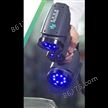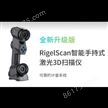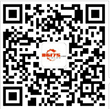How does the Zeta-APS measure particle size distributions?
Zeta-APS如何測量粒度分布?
The Zeta-APS exactly measures acoustic attenuation (dB/cm) vs. frequency of sound (1 to 100 MHz) of colloidal dispersions. These measurements are commonly referred to as Acoustic Attenuation Spectroscopy. The Zeta-APS also simultaneously measures speed of sound vs. frequency, percent solids, pH, conductivity, and temperature. The attenuation level, as well as, the shape of the acoustic attenuation curve shape is related to the particle size distribution (PSD). PSD’s are calculated from the acoustic attenuation data using software developed and patented by Lucent Technologies. This Lucent Technologies software is based on the Epstein and Carhart (later refined by Allegra and Hawley) theory of acoustic attenuation.
Zeta-APS準確測量了膠體分散體的聲衰減(dB/cm)與頻率(1-100MHz)的關系。這些測量通常被稱為聲衰減譜。Zeta-APS可以同時測量聲速、頻率、固體百分比、pH值、電導率和溫度。衰減水平以及聲衰減曲線形狀與顆粒粒徑分布(PSD)有關。PSD是由Lucent Technologies開發并獲得的軟件。該軟件基于Epstein和Carhart(后來由Allegra和Hawley改進)的聲衰減理論。
How does the Zeta-APS measure Zeta Potential (ZP)?
Zeta-APS如何測量Zeta電位?
The Zeta-APS uses an electroacoustic technique called Electrokinetic Sonic Amplitude (ESA, invented by Matec Applied Sciences) to measure Zeta potential of particles suspended in liquids. The Zeta-APS’ Zeta sensor applies short highfrequency (AC) pulses to the sample located within the electrode region of the Zeta sensor. These pulses last about 30 micro-seconds in the frequency range 0.5-3.5 MHz. The particles “jiggle” back and forth due to their surface electric charge which produces an output sound wave of the same frequency as the applied sound wave-provided there is a particle/solvent density difference of at least 2%. The sample can be mixed and/or pumped during the measurement without interfering with the ESA measurement.
Zeta-APS測量Zeta電位的方法被稱為電聲振幅(ESA)。 Zeta-APS的Zeta電位探頭將高頻交流脈沖施加到位于傳感器電極區域內的樣品中,這些脈沖在0.5-3.5 MHz的頻率范圍內持續約30微秒。由于粒子的表面電荷會產生與所施加聲波相同頻率的輸出聲波,因此粒子來回“擺動”,粒子周圍的介質對其將有阻力的影響,這種阻力會以聲波的形式從粒子表面傳播出來,電場內的粒子產生聲波的疊加,形成超聲波,其振幅就是電聲振幅(ESA),通過ESA來計算Zeta電位。需要注意的是顆粒與介質的密度差至少為2%。 測量期間可以攪拌或泵送樣品。
免責聲明
- 凡本網注明“來源:儀器網”的所有作品,均為浙江興旺寶明通網絡有限公司-儀器網合法擁有版權或有權使用的作品,未經本網授權不得轉載、摘編或利用其它方式使用上述作品。已經本網授權使用作品的,應在授權范圍內使用,并注明“來源:儀器網”。違反上述聲明者,本網將追究其相關法律責任。
- 本網轉載并注明自其他來源(非儀器網)的作品,目的在于傳遞更多信息,并不代表本網贊同其觀點和對其真實性負責,不承擔此類作品侵權行為的直接責任及連帶責任。其他媒體、網站或個人從本網轉載時,必須保留本網注明的作品第一來源,并自負版權等法律責任。
- 如涉及作品內容、版權等問題,請在作品發表之日起一周內與本網聯系,否則視為放棄相關權利。
 移動端
移動端






 回放
回放
 回放
回放




















 浙公網安備 33010602002722號
浙公網安備 33010602002722號
慕尼黑上海分析生化展(analytica China 2024)
展會城市:上海市展會時間:2024-11-18